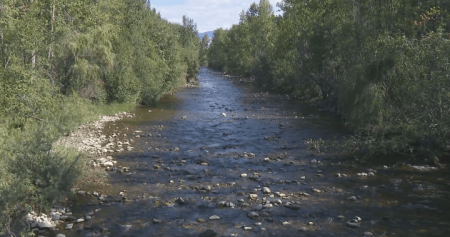Alberta’s irrigation district managers have put forth a $5 billion proposal for water storage and conservation in the province’s southern region. The plan aims to address the increasing strain on water resources in the area, especially as the population grows and climate change impacts become more severe. The Alberta Irrigation Districts Association released the report outlining this plan, highlighting the need for proactive measures to ensure water sustainability in the face of changing environmental conditions.
The South Saskatchewan River basin, which includes lands drained by the river, is expected to experience greater pressure on its water supplies in the future. While the region may still have enough water overall, the timing and distribution of this resource are likely to change. Water availability may vary throughout the year, with more water being lost as runoff instead of being stored for later use. The proposed projects include eight water storage initiatives and improvements, as well as the creation of new wetlands to help regulate water flow and absorption.
Margo Redelback, director of the Alberta Irrigation Districts Association, emphasizes the importance of careful management to ensure that sufficient water remains in rivers and streams for environmental needs. The proposed projects have the potential to generate up to $6 billion in economic activity, offering both environmental and economic benefits for the region. By implementing these initiatives, the association aims to mitigate the impacts of water scarcity and climate change on this vital resource that supports agriculture, industry, and communities in southern Alberta.
One key aspect of the proposed plan is the focus on creating additional water storage capacity to address the changing patterns of water availability. By investing in infrastructure that can store and release water as needed, the region can better manage its water resources and reduce the risk of shortages during times of high demand. This approach also includes the development of new wetlands, which can serve as natural reservoirs to help regulate water levels and protect against flooding in the area.
In addition to the immediate benefits of improved water management, the proposed projects have the potential to create long-term economic opportunities for Alberta. By investing in sustainable water use practices and infrastructure, the region can attract investment, create jobs, and support a more resilient economy. The economic stimulus generated by these initiatives is seen as a key advantage of the proposed plan, offering a way to address both environmental challenges and economic development goals in the region.
Overall, the $5 billion proposal for water storage and conservation in southern Alberta represents a comprehensive approach to addressing the growing challenges associated with water scarcity and climate change. By focusing on proactive measures such as new storage projects and wetland development, the plan aims to ensure a reliable water supply for agriculture, industry, and communities in the region. With careful management and investment, these initiatives have the potential to not only safeguard water resources but also stimulate economic growth and create a more sustainable future for Alberta.













